New YorkMap
April April in New York, pear trees in blossom: 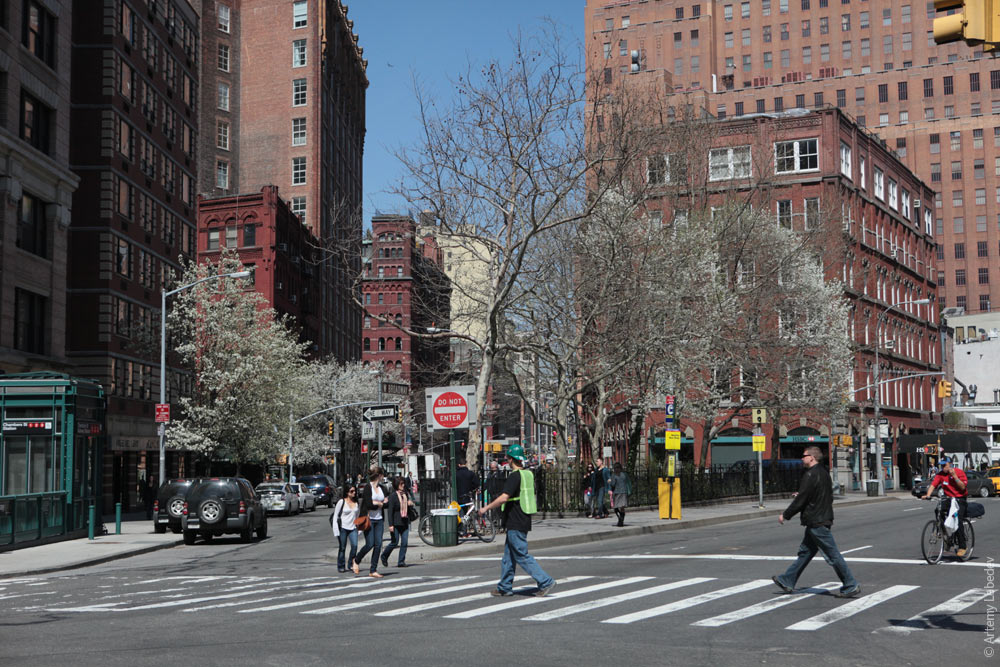 Another thing that’s blossoming here is concern for hygiene. There are hand sanitizer dispensers in every public establishment. 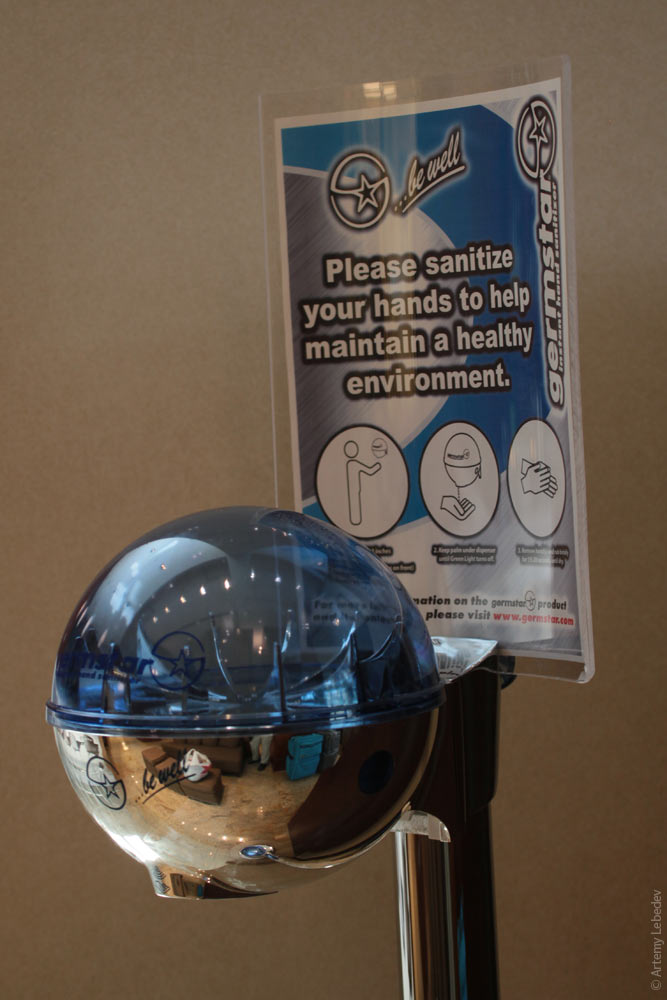 The US has found a way to deal with the problem of the homeless and rowdy groups of people roaming around at night. A sign is hung up in every public place (for example, in parks) stating that said place is closed during certain hours. Of course, it’s not really closed physically. But if anyone is found there during those hours, they can be legally arrested. I suppose this is good for society as a whole. But it’s things like this that allow me to assert that there is no freedom in America. 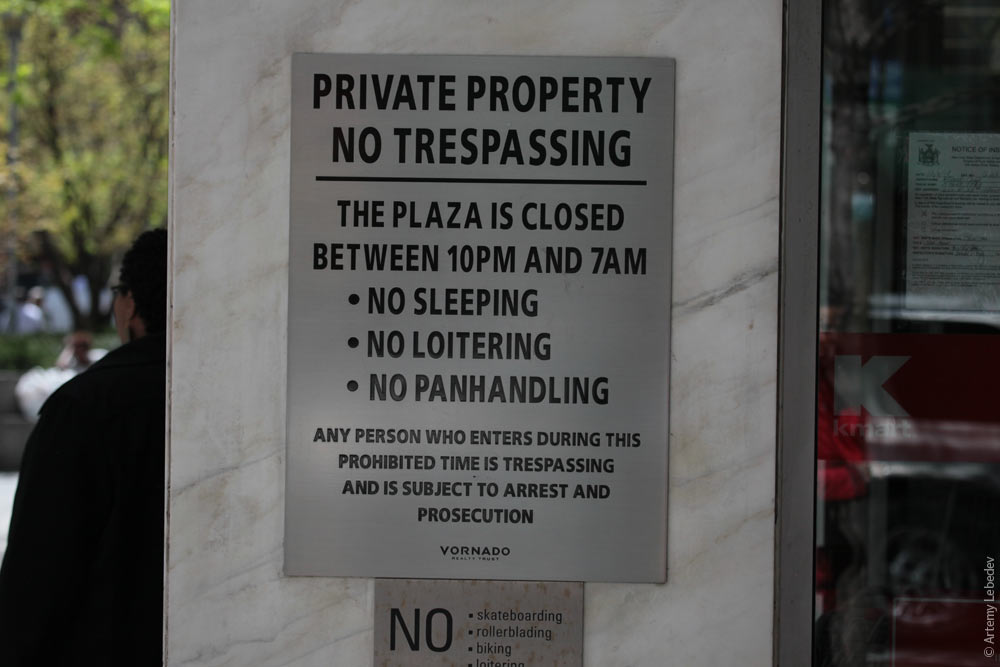 Absence of freedom has its advantages—you don’t see everyone drilling through the facades of buildings to install their air conditioners. Want to install an AC? Put in in your window, no problem. Easy in, easy out. But the exterior walls have to remain untouched. Now that’s concern for the common good. 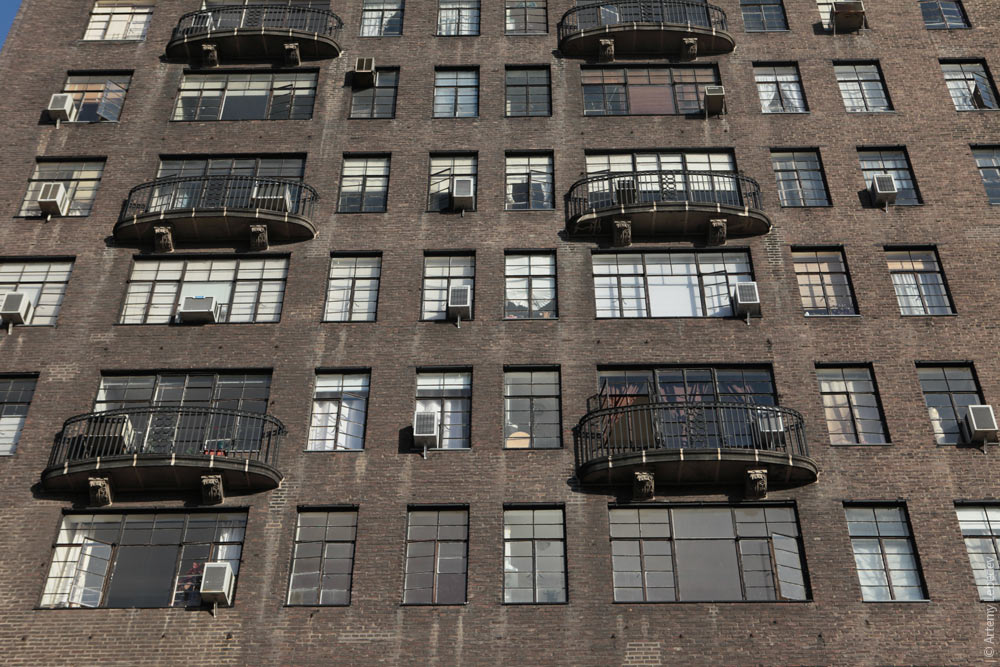 Here’s another great idea for the public good. A site that’s awaiting development is turned into a pop-up park in the meantime. People can come here to read a book or sit with their laptops. Everything is brought in and taken out in one day. 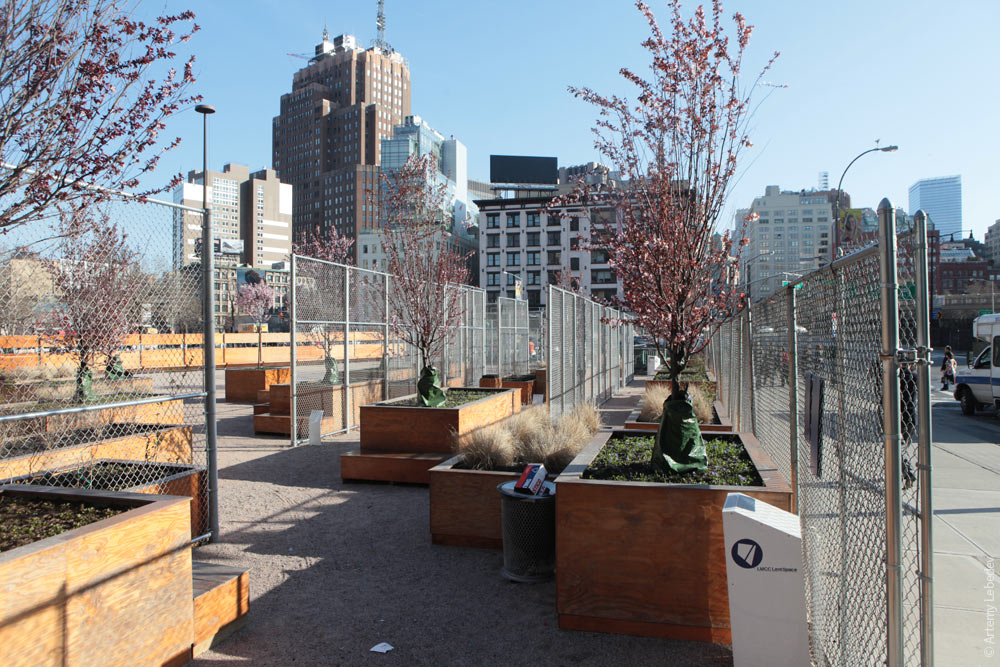 Speaking of books and laptops, the people in every coffee shop look like they came straight out of a bad movie about the future. There’s no more live interaction. Everyone is compulsively checking Facebook and writing their term papers. 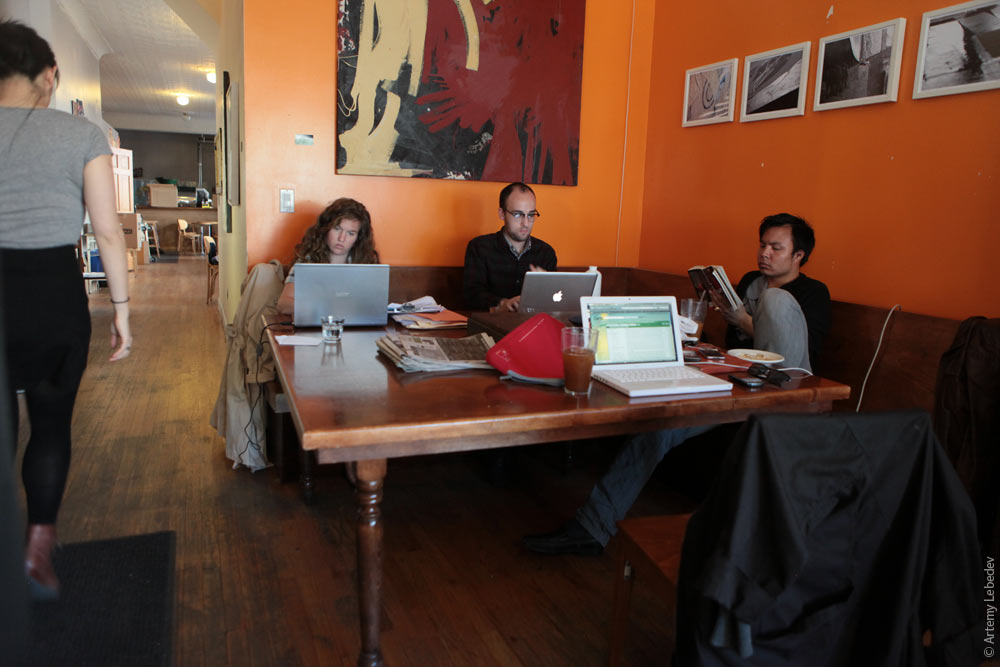 Scaffolding bolts (construction scaffolding is held together with bolts) are covered with protective caps to prevent them from catching on clothing. If there aren’t any caps, duct tape works too (compare woth Oslo). 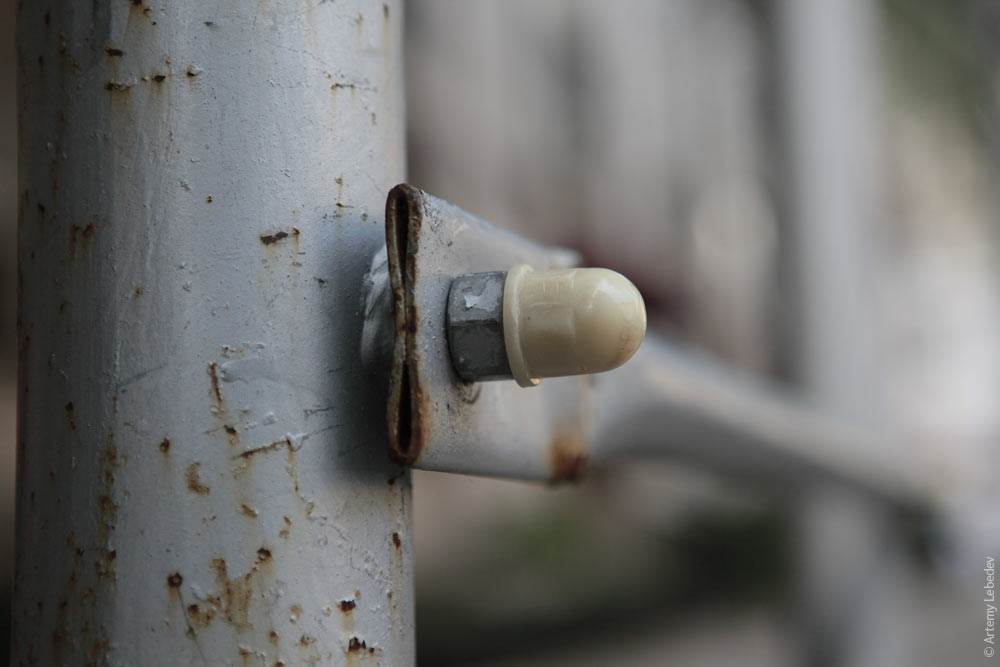 You can visit pretty much any place every month for ten years and still notice new details each time—details that were right there all along. I suddenly discovered that fire hydrants in New York are protected with metal posts, to prevent picturesque cinematic scenes where a taxi crashes into a fire hydrant and the hydrant blasts out a jet of water powerful enough to take down a helicopter. 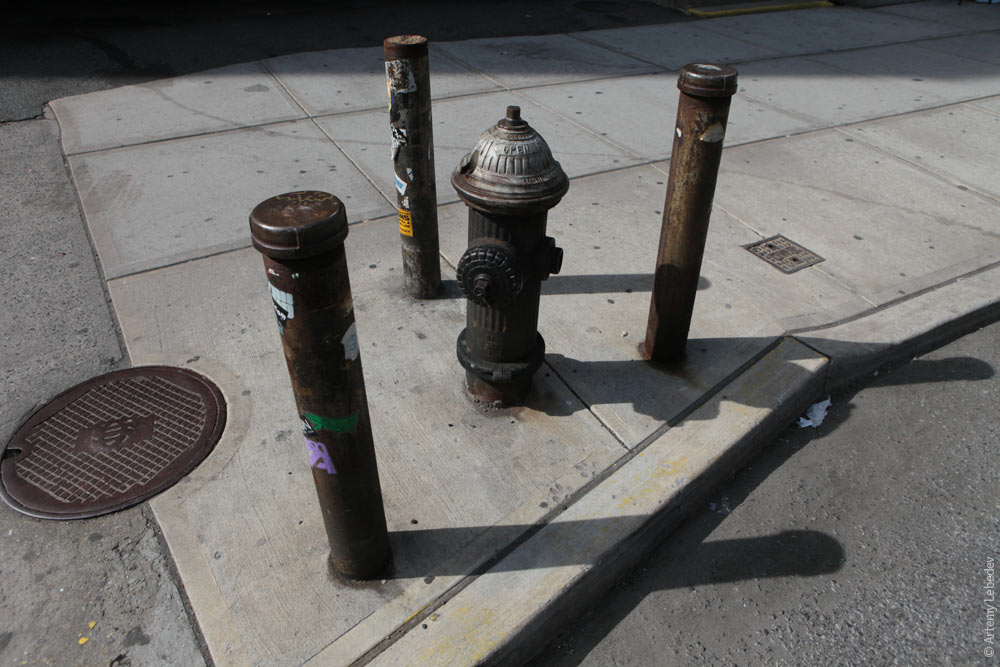 A drinking water sampling station. I have no idea how such a thing of beauty had eluded me till now. Also protected by metal posts. Previously, I’ve only seen such care for municipal property exercised in Kuwait. 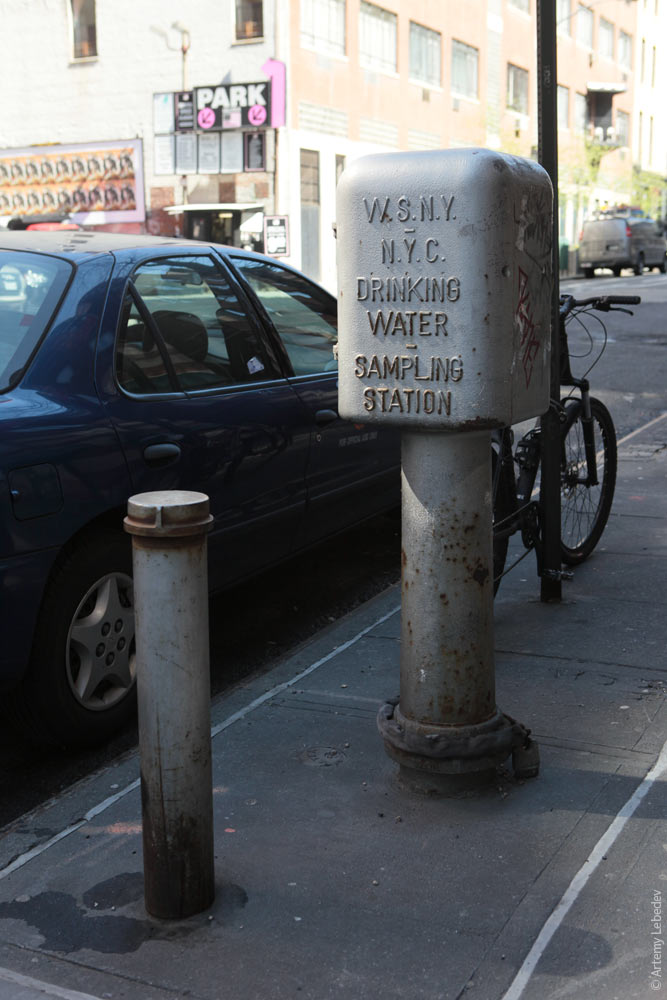 At the same time, there are completely unprotected liquid nitrogen tanks standing on the streets, practically inviting cars to crash into them. The tanks have tubes leading down into nearby manholes, taped to the asphalt with duct tape. This is done to keep underground telephone cables dry. 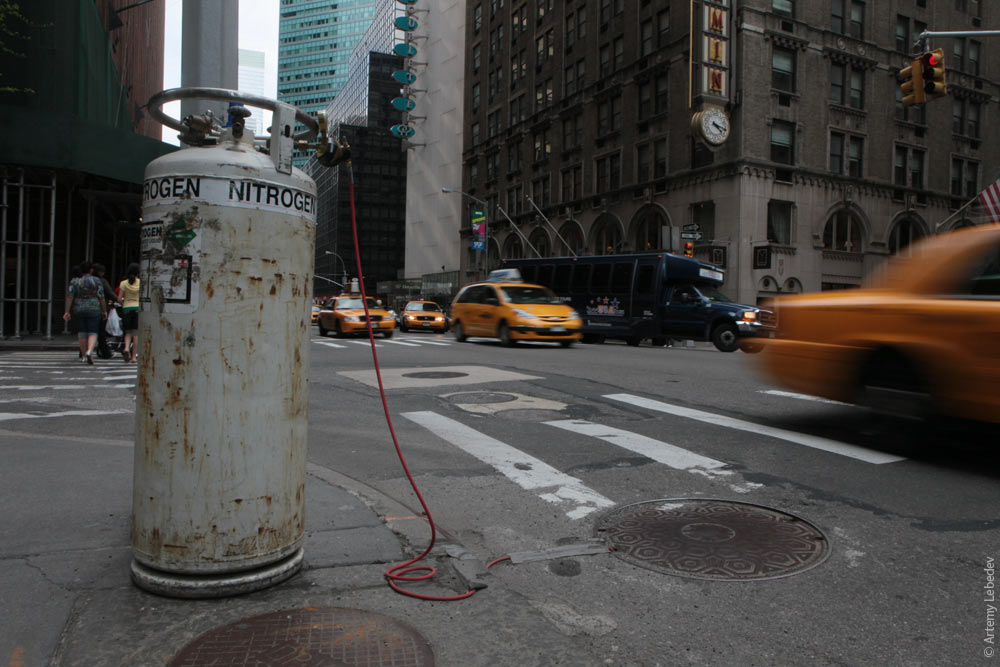 Multi-level stacked parking lots keep growing. It won’t be long until we see the first New York parking skyscraper. 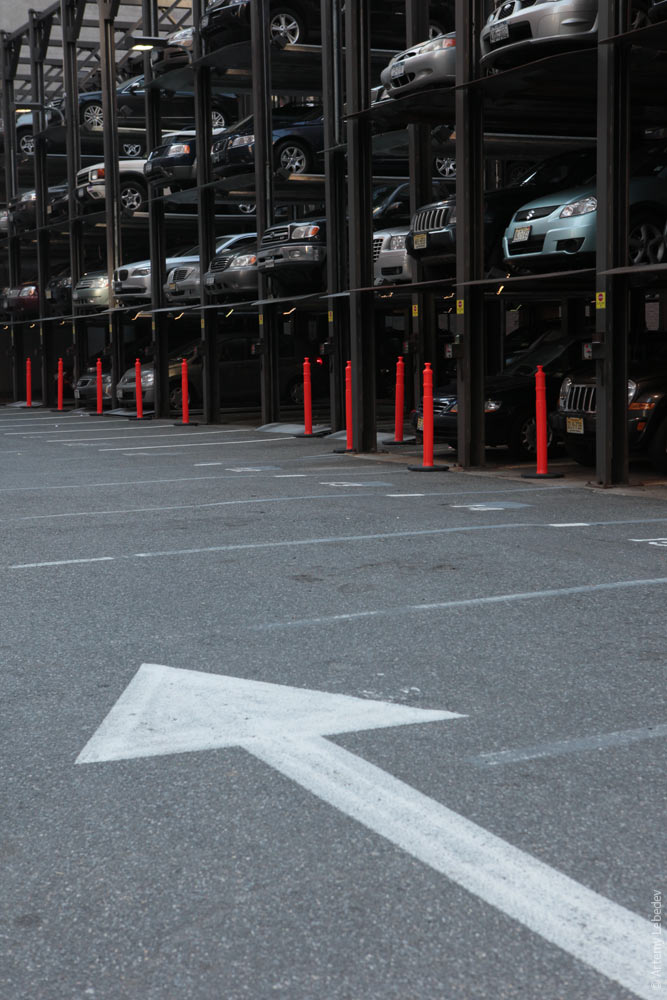 Speaking of skyscrapers, this is what the site where the World Trade Center towers once stood looks like today: 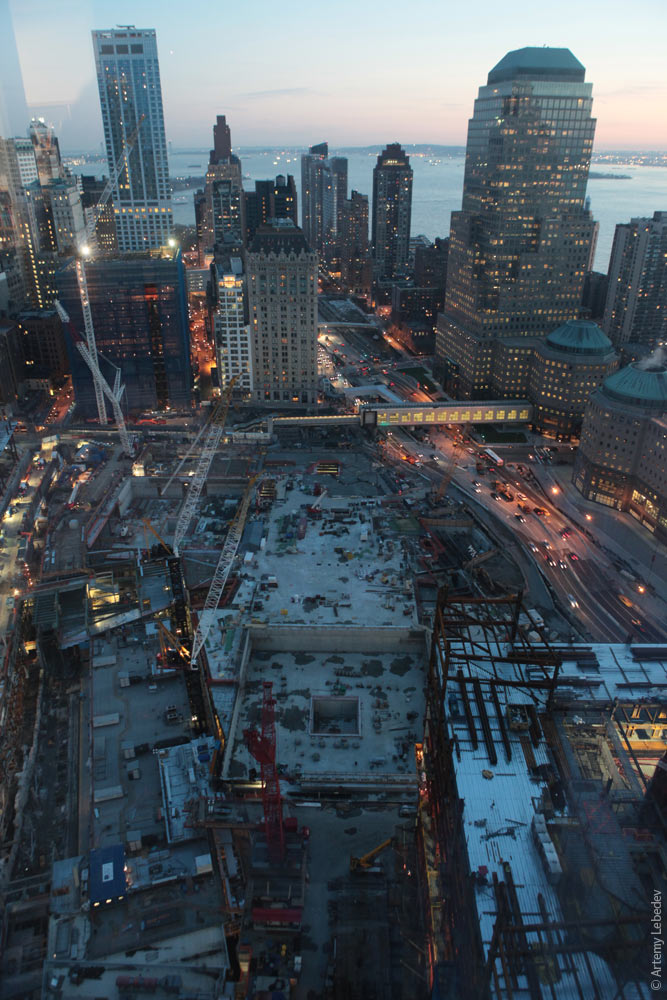 An interesting fact from the history of skyscraper design. In the early 20th century, one skyscraper erected in New York caused particular outrage because of its height and the size of the shadow it cast. As a consequence, the city passed a resolution decreeing that all high-rise buildings must end with a series of setbacks at the top. So that sunlight can still make its way down to the common folk once in a while. That resolution ended up greatly influencing architecture all around the world, including skyscrapers in Moscow, even though no one in Moscow had ever complained about high-rise buildings. 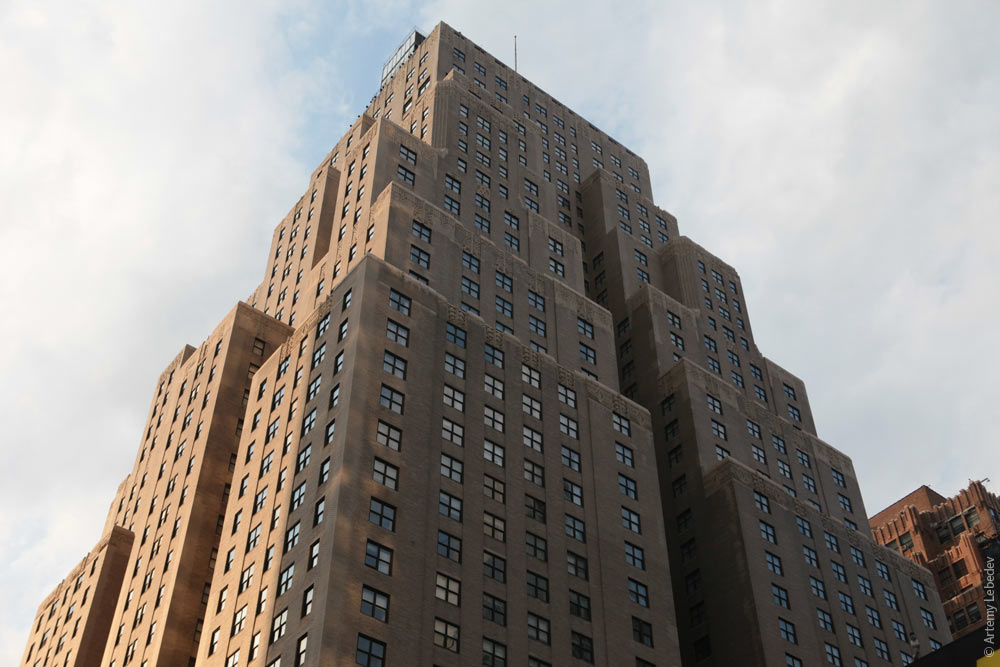 While we’re on the topic of zoning resolutions: after World War II and up until the death of Stalin, there was a resolution in effect that forbade the construction of any buildings lower than eight stories tall in the center of Moscow. And here’s a surprising detail from New York: 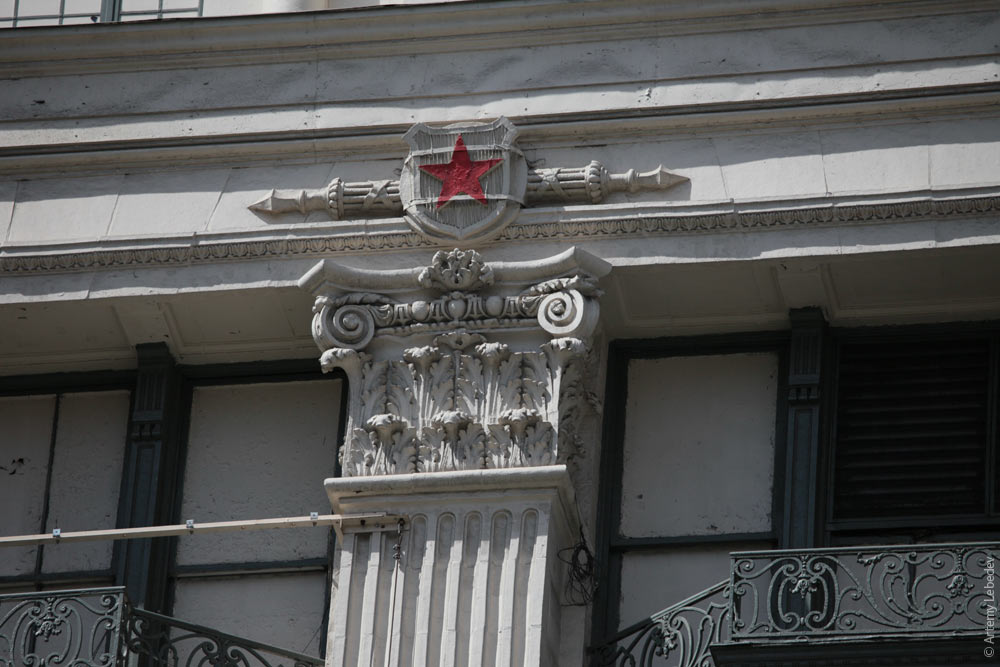 Another detail: the cables holding up the canopy over one of the entrances to Grand Central Terminal have been made to look like ship ropes with anti-rat cones. The rats are present, too. 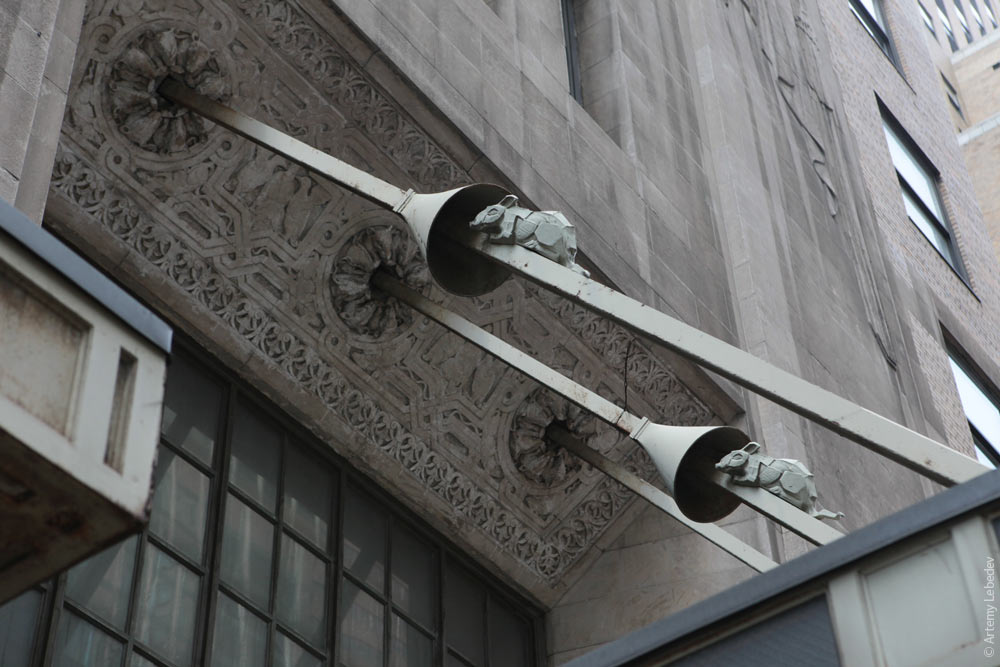 A trash can of striking beauty and elegance. 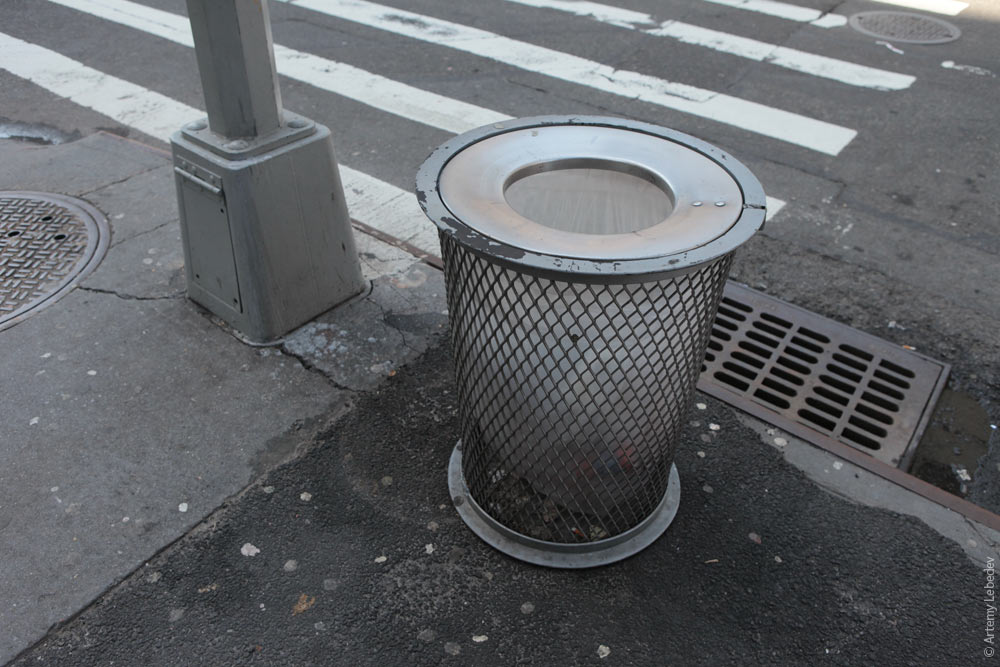 A no less elegant beautification and neutralization of a subway air vent. There are so many of these vent grates here, but they haven’t been used for anything besides free heating for the homeless. But lo, what beauty we have here—both benches and bike racks. 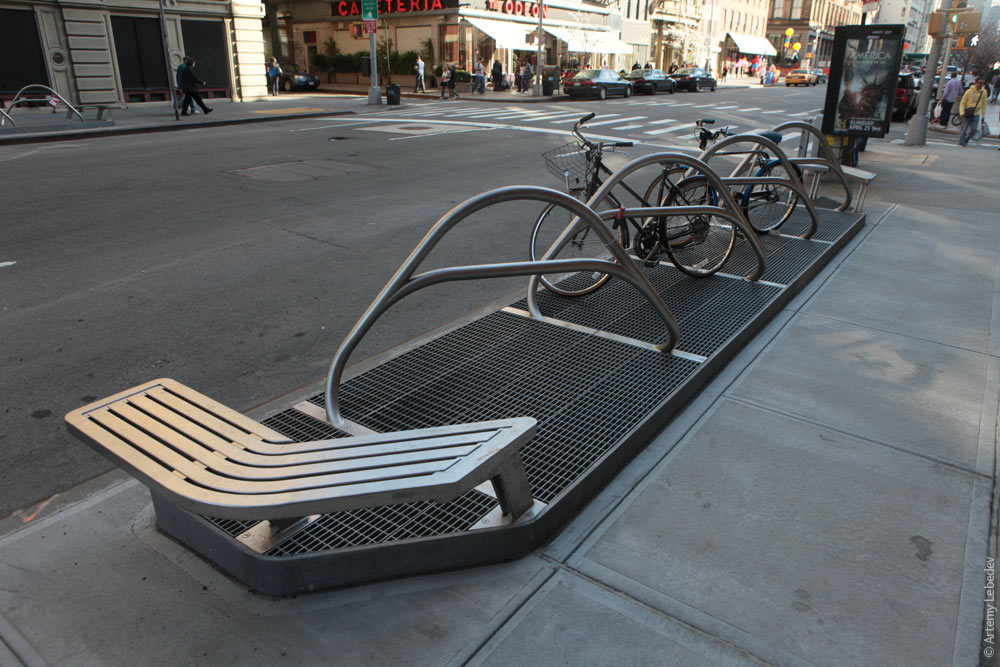 The subway itself, however, remains the same old claustrophobic bedbug-ridden abhorrence it always has been.  The construction site fence is decorated with a hundred green pedestrian light pictograms (several of the photographs there—Krasnoyarsk, Moscow and few others—are mine). 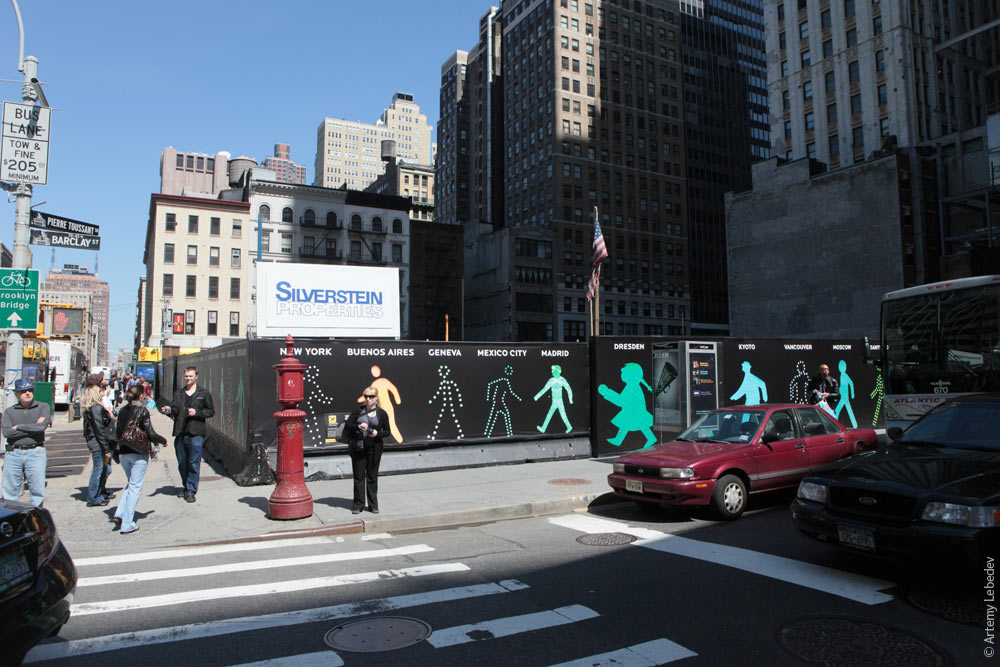 The iPad release date was set for April 4th. As usual, crowds of fans started lining up outside Apple stores the night before. The next day, the BBC aired footage of the moment one of the stores opened its doors and the stream of eager people poured in. Among the first customers was some Russian guy loudly chanting, “The iPad sucks! The iPad sucks!” Russian viewers took note, that bit of footage was cut out and never aired afterwards. 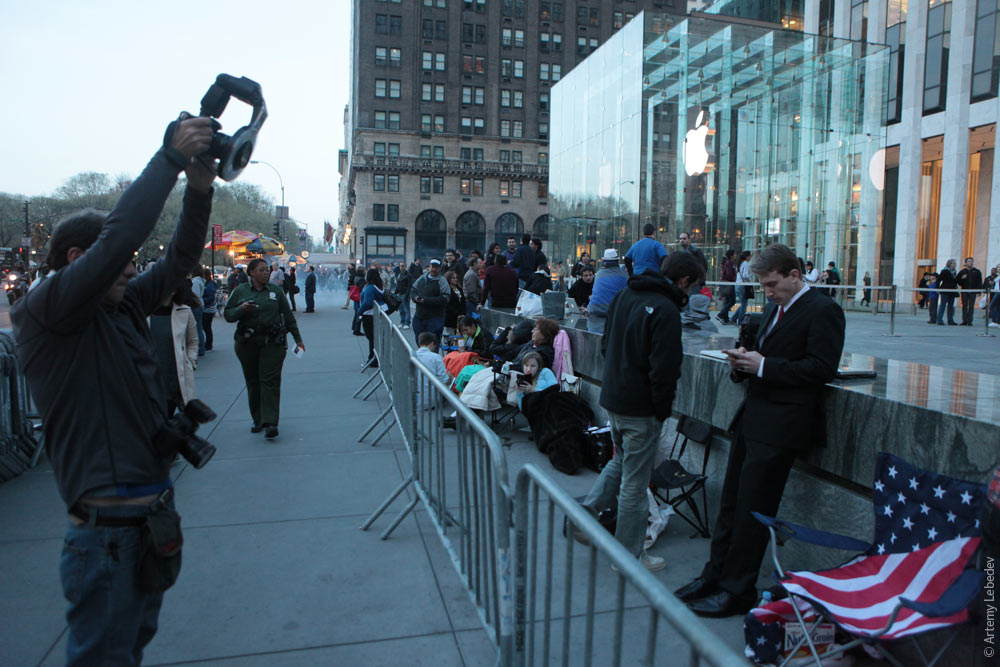 Nonetheless, everyone was writing and talking about the iPad and nothing else. The covers of several major magazines were dedicated to its release.  I can’t recall a single incident where one scientific or technological discovery was featured on the covers of multiple national magazines at the same time in Russia. Then again, we don’t have vending machines that sell earphones, music players and USB flash drives, either.  |